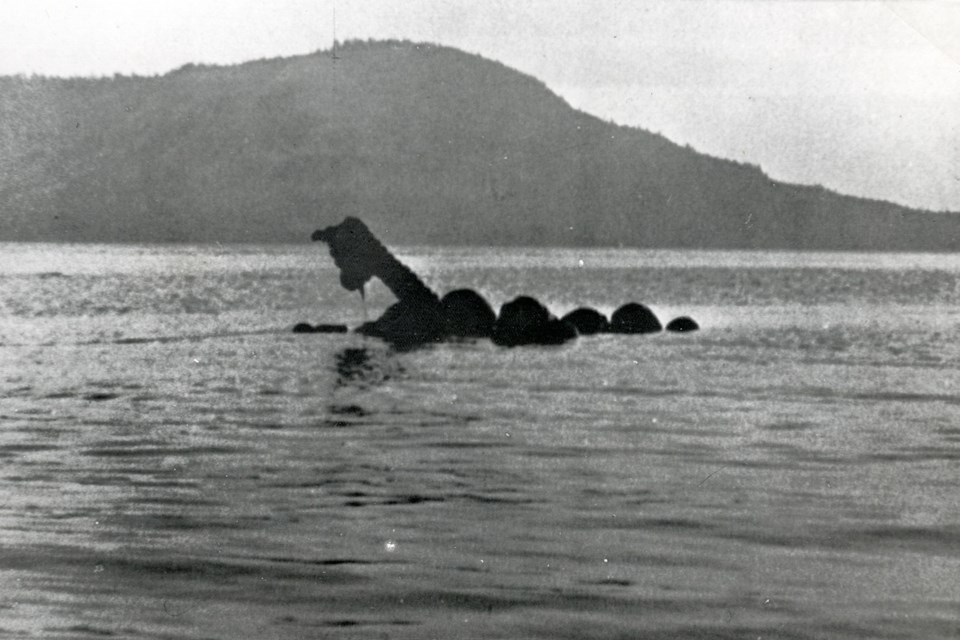Cadborosaurus — or Caddy, as the mythical local sea serpent is affectionately known — has risen again.
There is a difference, though, from the reported sightings of the creature some believe inhabits the waters off B.C.’s coast and has prompted comparisons to the Loch Ness monster in Scotland.
Caddy will resurface on television Monday at 10 p.m. on the Discovery show Sea Monsters: The Definitive Guide. It’s a documentary focusing on such fabled creatures that continue to fascinate skeptics and believers.
The Canada/U.K. co-production joins some of the world’s leading experts, including Paul LeBlond, a retired University of B.C. oceanography professor, in exploring “mysterious sea creatures.”
The Galiano Island cryptozoologist who wrote the book on Caddy (Cadborosaurus: Survivor from the Deep) with marine biologist Ed Bousfield, wasn’t surprised to learn the leviathan would be back in the spotlight.
Sightings have been reported for decades, dating to the 1930s in Cadboro Bay, but LeBlond has yet to find scientific evidence deemed essential to prove its existence.
“When a sea monster stops being a sea monster is when there is a specimen,” LeBlond says in the film, which also explores the mythology surrounding Scotland’s Nessie and the mighty Kraken, feared by ancient Vikings.
“They did a generally good job but it’s not the definitive guide,” said LeBlond, who was filmed last fall by crews returning from New Zealand, where they gathered footage of scientist Dr. Kat Bolstad dissecting a giant squid.
They were also interested in capturing Galiano Islander Lisa Lake’s recollections of seeing a strange creature in 2000 that matched common Caddy descriptions.
“She was very disturbed by it and said, ‘I don’t believe these things, but I’ve seen it,’ ” said LeBlond, who viewed Lake’s declaration as being a validation of his extensive research.
Lake says on camera that she has seen all kinds of activity in Active Pass from her waterfront home, including logs, porpoises, sea lions, otters and orcas, but this strange, elongated creature was unique.
“It had this kind of S-type shape, very narrow though, with that kind of horse-like head with the droop coming off the nose … and the humps behind it,” she says.
“It stood there for awhile and then it started to sink and then the tail did this whip thing … it undulated.”
She couldn’t believe her eyes when the elusive creature returned a year later.
“Having a mom that’s a science teacher, and being brought up to be skeptical, my whole world changed upside-down.”
While LeBlond wasn’t surprised by Lake’s description, he said “to convince a zoologist this is a real animal, you need that specimen you can touch and look at and share. That’s the apex of reliability.”
The documentary also recounts how skeptics thought sightings of the creature that inspired Gyro Park’s play structure were likely of a moose or grey whale. There was also reference to a 1937 sighting at Naden Harbour of what was believed to be a baby Caddy carcass inside a captured sperm whale’s stomach.
The film includes vintage news clippings and historical lore, as when its narrator dramatically intones: “[Some] think the whole Caddy story was made up by a journalist on a slow news day.”
“Trollers Say Caddy Is Their Friend Bosco” and “Caddy Rises to Sit With Times” read headlines that prompt memories of a 1930s newspaper circulation battle the film was likely referring to.
“[Victoria Times editor] Archie Wills was in a circulation contest with the Colonist and said, ‘That’ll sell papers!’ ” LeBlond said, recalling Wills published a flurry of so-called Caddy sightings.
“It was only one day after the first week that he didn’t have one in because there was a swimming contest in Juan de Fuca Strait and he didn’t want swimmers thinking there was a monster out there,” he said.
While LeBlond no longer actively looks for scientific evidence, he still shares information with colleagues and members of the B.C. Scientific Cryptozoology club he co-founded.
Ongoing initiatives he supports include a video camera that monitors Telegraph Cove for potential undersea activity, and Jason Walton’s Caddy Scan website.



